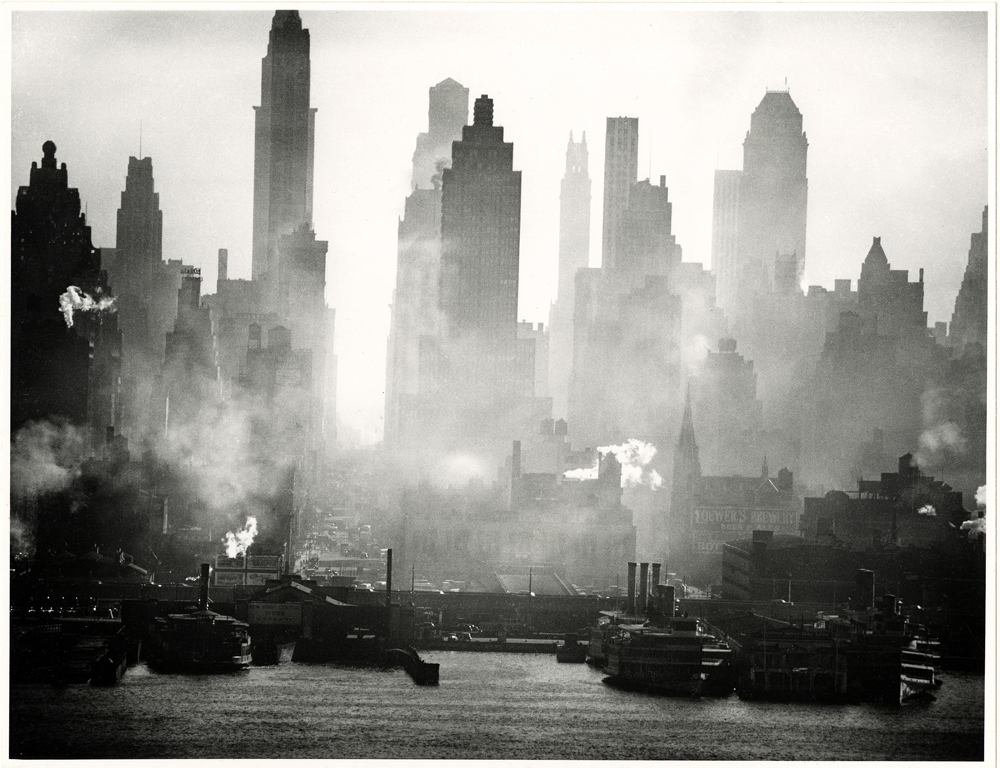Andreas Feininger
Andreas Bernhard Lyonel Feininger (* December 27, 1906 in Paris, † February 18, 1999 in New York ) was a photographer, teacher of photography and architect in the 20th century. He is the son of painter Lyonel Feininger.
Life
Andreas Feininger was born in Paris in 1906 as an American citizen, spent his youth in Berlin and in 1919 in Weimar and Dessau, where his father Lyonel Feininger taught at the Bauhaus University. His mother was a native of Jewish family artist Julia Berg, born Lilienfeld ( 1881-1970 ). Andreas Feininger at the Bauhaus completed an apprenticeship as a cabinetmaker and then studied at the school of architecture in Zerbst architecture.
In 1929 he presented his photographs already in the legendary exhibition Film und Foto (FIFO ) in Stuttgart. When finished architect he worked from 1929 to 1931 in Hamburg, as a draftsman for the architectural firm of department store chain Karstadt. Being a trained professional was in his artistic life never be the main focus, but he designed but several impressive buildings that have their own handwriting, as which was later named after its builder Andreas Feininger House, Bühringstraße 2-8, 13086 Berlin -Weissensee, in which today is a part of the Robert Koch Institute is established.
1932 Feininger lost his work permit and went to Paris. Less than a year he worked at the famous architect Le Corbusier. Since he in those years did not receive a work permit in France, he emigrated in 1933 with his Swedish girlfriend Wyss Hägg, who he met at the Bauhaus, to Stockholm, where both married and 1935 also her son Tomas was born.
In Stockholm Andreas Feininger wanted to work as an architect, he established himself, however, very quickly as a popular architectural photographer and now also as a technical expert in the photo lab. He built his own cameras with huge telephoto optics and a magnification device with innovative mechanics, which the company Liesegang industrially produced later. With the outbreak of the war he was forced to emigrate in 1939 with his family to America, to New York, where he also met his parents again.
Andreas Feininger initially earned his living as a freelance photojournalist and photographer. From 1943 to 1962 he was tenured staff photographer at LIFE magazine and later a freelance photographer and widely read author. Andreas Feininger has published over 50 textbooks and picture books, some of which were translated into several languages. His textbooks are standard works on photographic universities. In 1955 he was also invited to participate in the epochal exhibition The Family of Man at the Museum of Modern Art in New York.
With his photography, he gained international recognition. Andreas Feininger died on 18 February 1999 at the age of 92 years in New York. His paintings are classics in the history of photography.
Work
Feininger's most famous photos were taken using professional cameras with telephoto lenses with a very long focal length, Feininger partially built himself. In this way he was able to maintain long distance from his motives and represent the actual proportions. That he succeeded in an impressive manner, and many of his photos, especially of his new hometown of New York City, became world famous. Another focus was his through-composed macro photography of nature details.
The self-taught Feininger later presented a series of textbooks for photographic composition and the photo technology, which evolved into standard works. The most important prerequisite for good photos was the true interest of the photographer to his subject for him.










